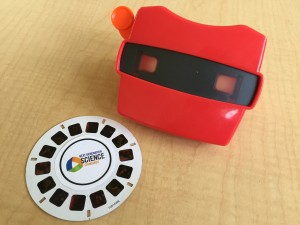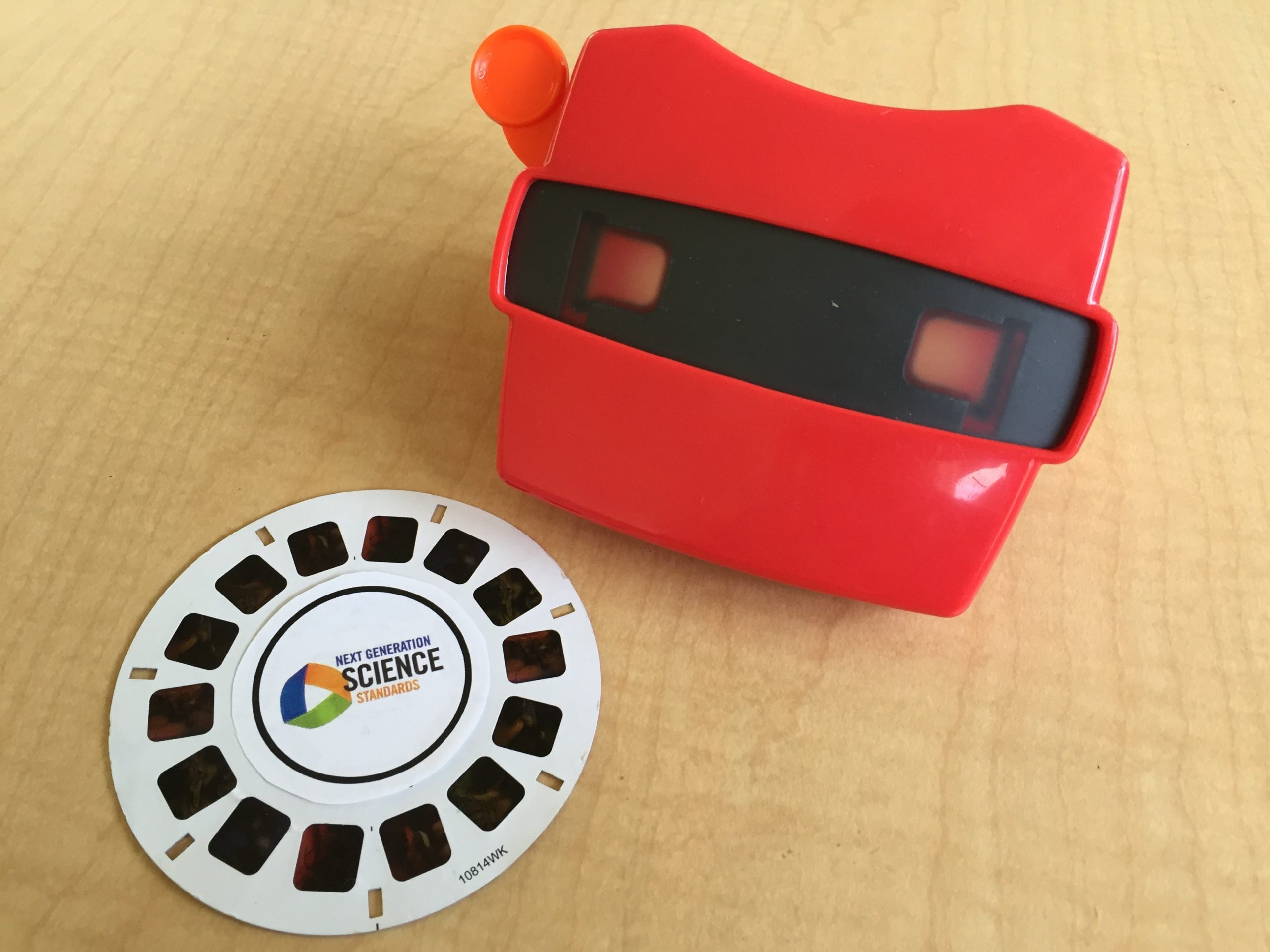 Do you remember looking through a View-Master when you were young? Holding those plastic binoculars up to your eyes revealed a three dimensional world of tropical fish, far off lands, and prehistoric dinosaurs. The official term for this effect, stereoscopy, relies on an optical trick of convergence and focal point to give the impression of a third dimension. The popularity of 3-D movies and quasi-virtual reality tools like Google Cardboard have made it apparent more than just children with toys enjoy being tricked into seeing in three dimensions. In science education there is equal excitement over adding a third dimension thanks to the Next Generation Science Standards (NGSS).
Do you remember looking through a View-Master when you were young? Holding those plastic binoculars up to your eyes revealed a three dimensional world of tropical fish, far off lands, and prehistoric dinosaurs. The official term for this effect, stereoscopy, relies on an optical trick of convergence and focal point to give the impression of a third dimension. The popularity of 3-D movies and quasi-virtual reality tools like Google Cardboard have made it apparent more than just children with toys enjoy being tricked into seeing in three dimensions. In science education there is equal excitement over adding a third dimension thanks to the Next Generation Science Standards (NGSS).
The NGSS shift how we teach science based on the way science is practiced in the real world. These standards move away from the traditional expectation that students work to memorize the names of structures, cycles, and dates of discovery, opting instead for performance expectations supported by three dimensions of science: Science and Engineering Practices, Crosscutting Concepts, and Disciplinary Core Ideas. While each of these dimensions is distinct, they support one another in furthering how teachers teach science, and more importantly, how students now learn science.
Here’s a quick run down of each dimension and how they pertain to the NGSS. Want to dive deeper into the dimensions? Follow the hyperlink in each dimension’s title for a look at the National Research Council’s Framework for K-12 Science Education, the guiding document for the standards.
Science and Engineering Practices– How Science Gets Done
Consider for a moment the many similarities that exist among the fields of science and engineering, including the use of models, data analysis, and communicating information. These practices are universal to how scientists and engineers explore and build knowledge, whether studying climate change or mycology. By helping students develop the skills necessary to apply the eight science and engineering practices we not only help them understand how to accomplish sound science, but also how to become critical thinkers by approaching problems and challenges in a measured and systematic manner.
Crosscutting Concepts– Making Connections Across Disciplines
Similar to the Practices, Crosscutting Concepts span all subjects of science and engineering. The Concepts link together our understanding of the natural and constructed world in which we live by creating an organization that supports a scientifically sound approach to making sense of phenomena. The seven concepts are: patterns, causation, scale, systems, energy, structure and function, and stability and change.
Disciplinary Core Ideas– Subject Specific Knowledge
Hearkening back to the science standards of yesterday, or more accurately prior to 2013, the Disciplinary Core Ideas (DCIs) describe the key concepts of the four areas of science and engineering; Physical science, life science, earth and space science, and engineering and technology. It is still important for students to understand concepts such as forces and motion, and astronomy, but what has changed is that the understanding no longer stops with discipline specific content. Additionally, the DCIs also narrow the scope of topics covered at each grade,allowing students to dive deeper into fewer content areas.
Understanding the three dimensions of the NGSS will help you create richer, more dynamic learning experiences for your students. By considering how a physical science lesson can include the Practice of constructing an explanation and the Crosscutting Concept of energy transfer, you deepen understanding of, and interest in, science and it’s importance in the world. After all, the world is always more interesting in 3-D.
For more on how the three dimensions look in the classroom, check out these great videos from the Teaching Channel:
Science and Engineering Practices
https://www.teachingchannel.org/videos/science-engineering-practices-achieve#
Crosscutting Concepts
Disciplinary Core Ideas
https://www.teachingchannel.org/videos/disciplinary-core-ideas-achieve

